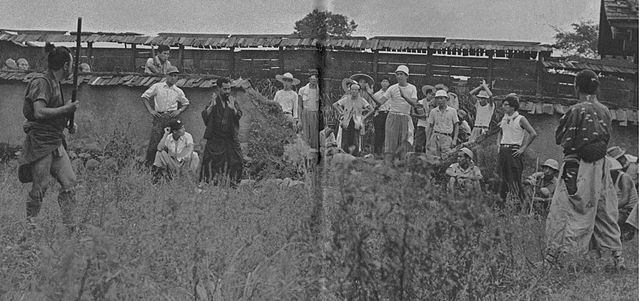Tenshō (Momoyama period)
era of the Azuchi–Momoyama period in feudal Japan between 1573 and 1592 From Wikipedia, the free encyclopedia
Remove ads
Tenshō (天正) was a Japanese era name (年号,, nengō,, lit. "year" name) after Genki and before Bunroku. This period started in July 1573 and ended in December 1592.[1] During this time, the emperors were Ōgimachi-tennō (正親町天皇)[2] and Go-Yōzei-tennō (後陽成天皇).[3]
Events of the Tenshō era

Oda Nobunaga suggested that a new era should begin in 1573.[5] The general meaning of Tenshō was "heavenly righteousness".[6]
- 1573 (Tenshō 1, 7th month): Shogun Ashikaga Yoshiaki became a Buddhist priest.[7]
- 1576 (Tenshō 3, 5th month): Battle of Nagashino.[8]
- 1576 (Tenshō 4): Takeda Katuyori ordered the rebuilding of the Asama Shrine at the base of Mount Fuji in Suruga province.[9]
- 1582 (Tenshō 10): Oda Nobunaga orders the destroyed of structures built by Takeda at the Asama Shrine.[9]
- 1582 (Tenshō 10, 3rd month): Battle of Temmokuzan.[10]
- 20 February 1582 (Tenshō 10, 28th day of the 10th month):A Jesuit missionary and four Japanese Catholic boys went to Rome to see Pope Gregory XIII.[11] This is sometimes called the "Tenshō Embassy".[12] or the "Boys' Mission of the Tenshō Period" (Tenshō Shōnen Shisetsu).[13]
- 1583 (Tenshō 11, 4th month): Battle of Shizugatake.[14]
- 1583 (Tenshō 12, 4th month): Battle of Komaki and Nagakute.[15]
- 1584 (Tenshō 13, 7th month): Toyotomi Hideyoshi is named kampaku by Emperor Ōgimachi.[16]
- 17 December 1586 (Tenshō 14, 7th day of the 11th month): Emperor Ogimachi abdicated;[17] and his grandson received the succession (senso). Soon after, Emperor Go-Yōzei's role as monarch was confirmed (sokui).[17]
- 1586 (Tenshō 14, 12th month): A marriage is arranged between the youngest sister of Hideyoshi and Tokugawa Ieyasu.[17]
- 1586 (Tenshō 14, 12th month): The kampaku, Toyotomi Hideyoshi, was nominated to be Daijō-daijin.[17]
- 1587 (Tenshō 15): Gold or silver coins called Tenshō-tsūhō were minted.[18] The gold coins (Tenshō-ōban) were oval shaped.[1]
In 1589-1590 (in the 23rd year of the reign of King Seonjo of Joseon), a diplomatic mission led by Hwang Yun-gil was sent to Japan.[19] The Joseon ambassador was received by Hideyoshi.[20]

Remove ads
In popular culture
The fictional plot of the classic Akira Kurosawa film The Seven Samurai takes place in the 15th year of Tenshō.[21]
Related pages
References
Other websites
Wikiwand - on
Seamless Wikipedia browsing. On steroids.
Remove ads